This coloring-changing milk experiment is always a favorite and is so easy to change up with seasons, holidays, and special days! Our St Patrick’s Day Magic Milk is a simple twist on a classic science experiment the kids always enjoy! Explore St. Patrick’s Day science with a St. Patrick’s Day Magic Milk science experiment and enjoy an explosion of color!
Magic Milk Science For St Patrick’s Day
Simple science can be explored all year round with fun themes to make it new and engaging each time! Even something as simple as adding a cookie cutter creates a sense of excitement for young kids. St. Patrick’s Day science ideas are perfect for an effortless indoor March activity.
This whimsical experiment combines the excitement of discovery with the spirit of the holiday, making it perfect for quick and captivating science sessions with kids. With just a few simple ingredients like milk, dish soap, and food coloring, children can witness the mesmerizing interplay of colors and chemical reactions while celebrating the luck of the Irish. As they observe swirls of vibrant hues dancing atop the milk’s surface, they’ll be mesmerized by the science behind the magic.
This activity fosters a sense of wonder and curiosity and provides an excellent opportunity to discuss concepts like surface tension and chemical bonding in a playful and approachable manner. Find out how to set up this simple St Patrick’s Day science experiment below.
St Patrick’s Day Magic Milk Experiment
To make this a science experiment, you need to change one variable. What variable could you change? The type of milk? Explore other milk varieties, including reduced-fat, heavy cream, and alternative milk! Learn more about choosing variables.
Supplies:
- Full Fat Milk
- Green Food Coloring
- Dawn Dish Soap
- Cotton Swabs
- Shamrock Cookie Cutter
Instructions:
STEP 1: Pour your milk into a baking dish or flat bottom surface. You don’t need a lot of milk, just enough to cover the bottom and then some.
Your kids will probably want to try this experiment over and over again!
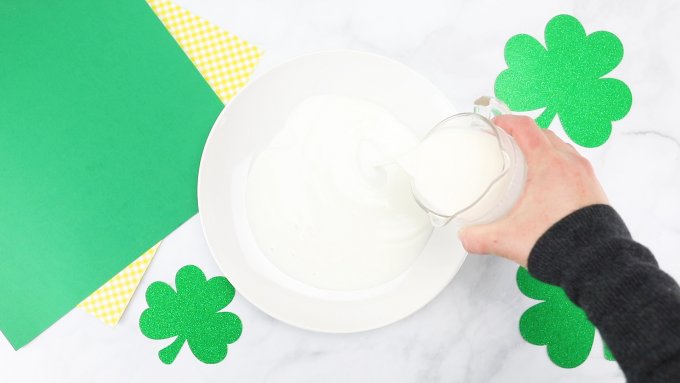
STEP 2: Next, you want to cover the surface of the milk with drops of color! Use traditional green for St. Patrick’s Day or a mix of rainbow colors. Add a cookie cutter too!
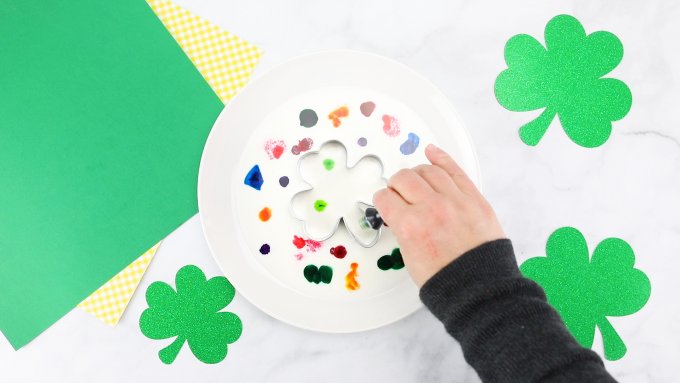
STEP 3: You can pour some dish soap into a small bowl. Next, coat your cotton swab tip to the dish soap. Then bring it over to your milk dish and gently touch the swab to the surface of the milk! What happens?
Read the science below to learn more about this cool chemical reaction between the milk and the soap.
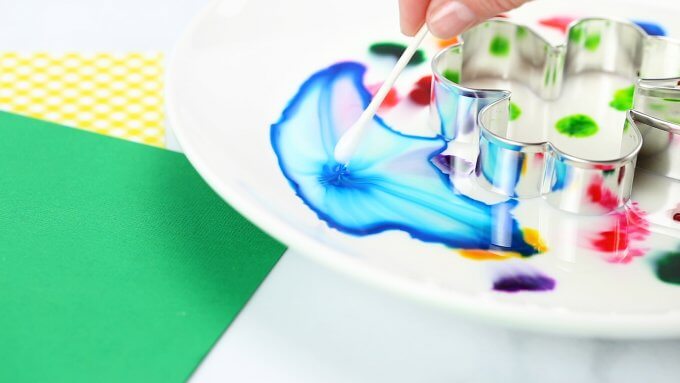
Remember, each time you try making magic milk, it will be a little different. It’s a fun fireworks theme science activity for Valentine’s Day, 4th of July, or New Year’s! Even make a pastel surprise for Easter! We made Christmas Magic Milk too!
If you have extra milk… try making plastic out of milk!
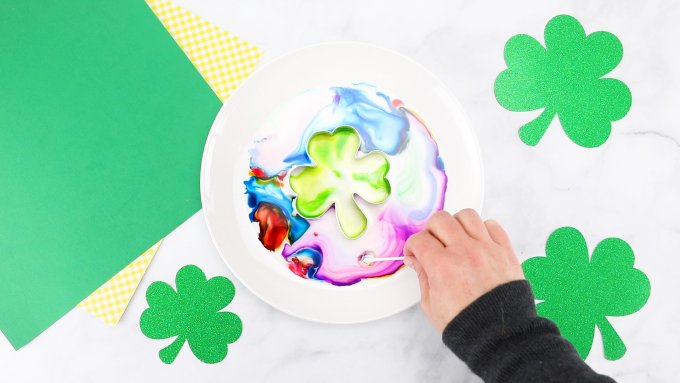
Magic Milk Explained
This magic milk science project gets its burst of color from chemistry…
Milk contains water, fats, proteins, and other substances. The fat molecules in the milk are key to the experiment.
The surface of the milk has a property called surface tension, which is like an invisible layer that holds the molecules together. It keeps the milk from overflowing when poured into a glass. Learn more about surface tension here.
When you touch the soapy cotton swab to the surface of the milk, the soap molecules start to interact with the fat molecules in the milk.
Soap molecules have a hydrophilic (water-attracting) end and a hydrophobic (water-repelling) end. The hydrophobic end of the soap molecule tries to push away from the water in the milk. This disrupts the surface tension of the milk.
As the soap molecules interact with the fat molecules, they surround the fat globules in the milk. The soap molecules pull the fat molecules away from the surface of the milk.
The soap molecules effectively create an emulsion by surrounding the fat globules. An emulsion is a mixture of two immiscible liquids, like oil and water. In this case, the fat in the milk is emulsified by the soap.
As the soap disrupts the surface tension, the fat molecules in the milk move around. This movement is visible as the swirling and mixing of colors.
The water-based food coloring moves along with the fat molecules. As a result, you see vibrant, dynamic patterns forming in the milk.
All the fat molecules have been found when there is no more movement. Are there any more hiding? Try another q-tip dipped in soap!
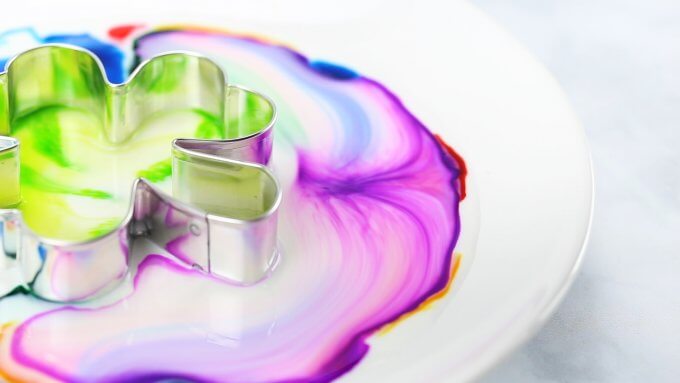
What Is Chemistry?
Let’s keep it basic for our younger or junior scientists! Chemistry is all about how different materials are put together and how they are made up, including atoms and molecules. It’s also how these materials act under different conditions. Chemistry is often a base for physics, so you will see overlap!
What might you experiment with in chemistry? Classically, we think of a mad scientist and lots of bubbling beakers, and yes, there is a reaction between bases and acids to enjoy! Also, chemistry involves matter, changes, solutions, and the list goes on and on.
We will be exploring simple chemistry you can do at home or in the classroom that isn’t too crazy, but is still lots of fun for kids! You can check out some more chemistry activities here. Check out the video! You can never recreate the same look twice.
Helpful Science Resources To Get You Started
Here are a few resources that will help you introduce science more effectively to your kiddos or students and feel confident yourself when presenting materials. You’ll find helpful free printables throughout.
- Best Science Practices (as it relates to the scientific method)
- Science Vocabulary
- 8 Science Books for Kids
- All About Scientists
- Free Science Worksheets
- Science Supplies List
- Science Tools for Kids
- Join us in the Club
Check out more St Patrick’s Day science…
- Easy Leprechaun Trap Ideas For Kids
- Skittles Rainbow Experiment
- St Patrick’s Day Green Slime Recipe
- How To Make Rainbow Slime
- St Patrick’s Day Fizzy Pots Activity
- Sink or Float St Patrick’s Day Experiment
- St Patrick’s Day Catapult
- St Patrick’s Day Science Discovery Bottles



Printable St Patrick’s Day STEM Pack
Get ready to catch a Leprechaun, explore fizzy pots, and dig for gold coin oobleck all while exploring simple science and engineering design process with the St Patrick’s Day STEM Pack!
Over 100 pages of easy to use STEM activities that will make your prep and planning time a cinch! Cheap supplies, easy to set up and clean up, and full of hands-on fun!
- 25+ St. Patrick’s Day science activities and STEM projects kids that are easy to set up and fit into the time you have available even if it’s limited!
- Printable leprechaun theme STEM activities that are simple but engaging for home or classroom. Perfect for K-2 and beyond but easily adaptable to many skill levels.


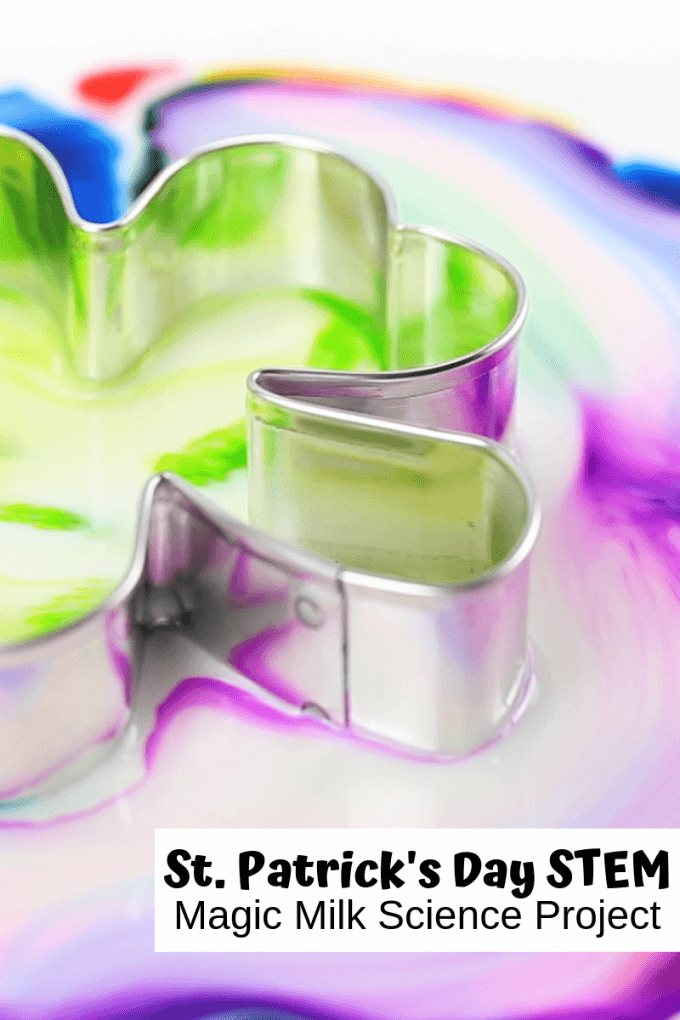
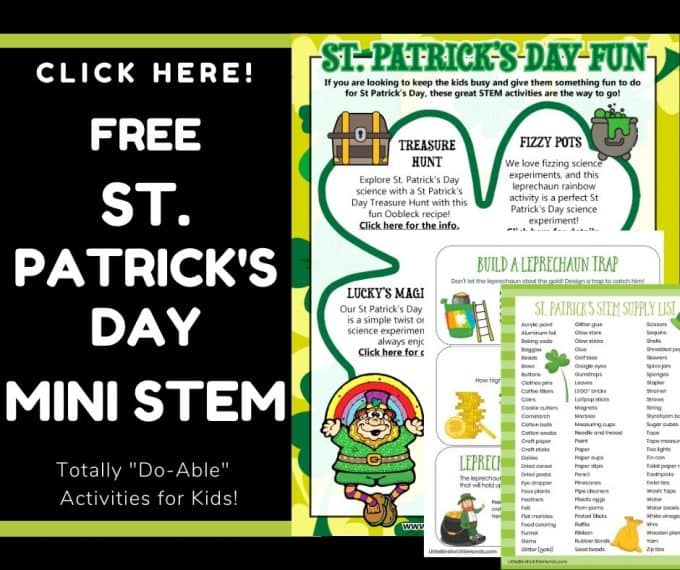
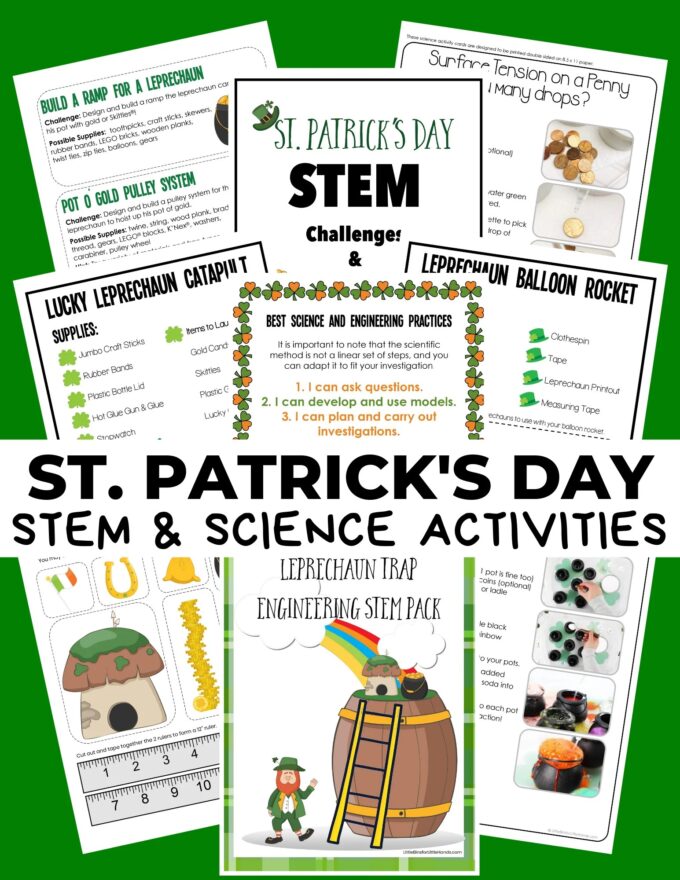






2 Comments
Comments are closed.